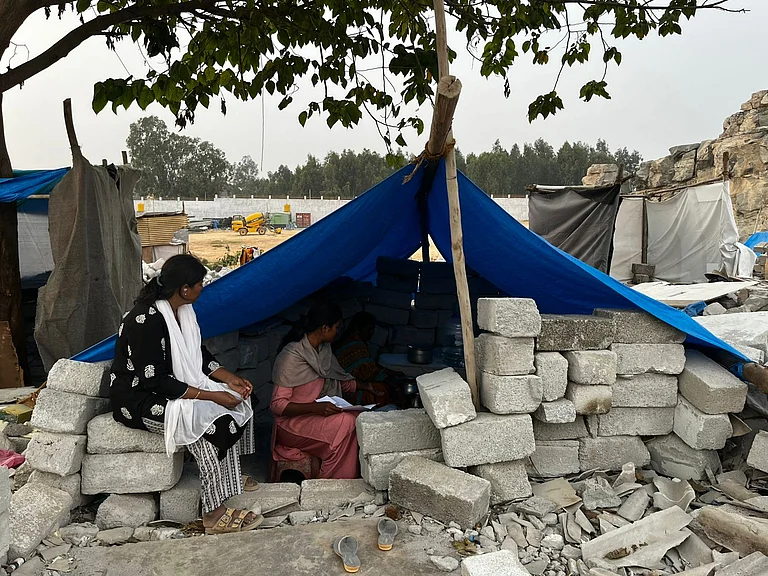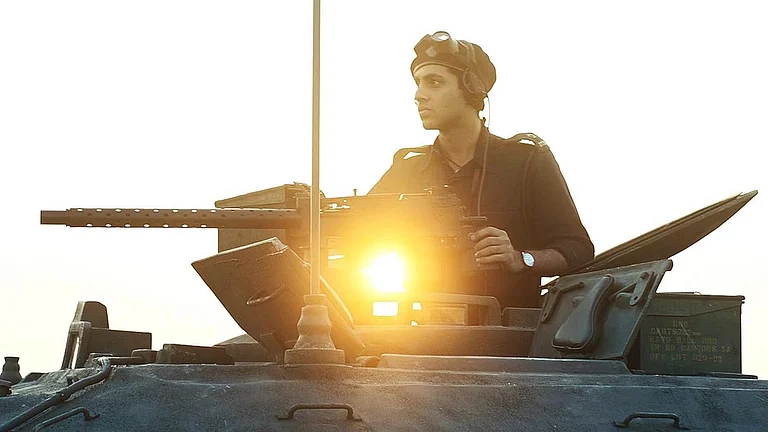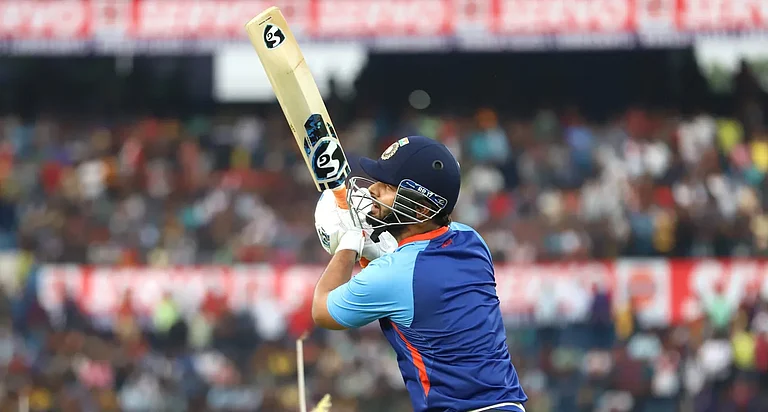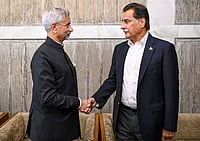The debate around the politics of statues has come to the fore once again after the state government of Madhya Pradesh announced a Rs 2,000 crore initiative to build a 108-ft tall statue of religious leader and philosopher Adi Shankaracharya. The philosopher is said to have contributed to the compilation of the Advaita Vedanta and resurrected a Hindu culture on the edge of extinction. Born in 788 C.E. in Kalady, Kerala, he died at age 32 in the year 820 C.E. Adi Shankaracharya is considered to be an important figure in the history of Hinduism. The announcement comes at a time when the state is under a Rs 2.5 lakh crore debt.
The statue dubbed the 'Statue of Oneness', would stand 108-ft tall and be mounted on a 54-ft-high platform. The statue along with the Shankar Museum will be built on a 7.5-hectare plot on the Mandhata mountain.
As an opposition party in Madhya Pradesh, Congress has not contested the project ideologically but has asked where the budget will come from when the state is already facing a financial crisis. They have also demanded a white paper on the debt.
Nevertheless, symbolism through statues of political icons has been an essential element of politics. All central states find their heroes from different political ideologies and movements that shaped their politics. If statues of Jai Prakash Narayan and Ram Manohar Lohiya, the architect of socialist politics in India, have found their presence on the streets of Patna, Mayawati, can be seen embodied in stones in Lucknow and Noida, adjacent to the power centre of India, New Delhi.
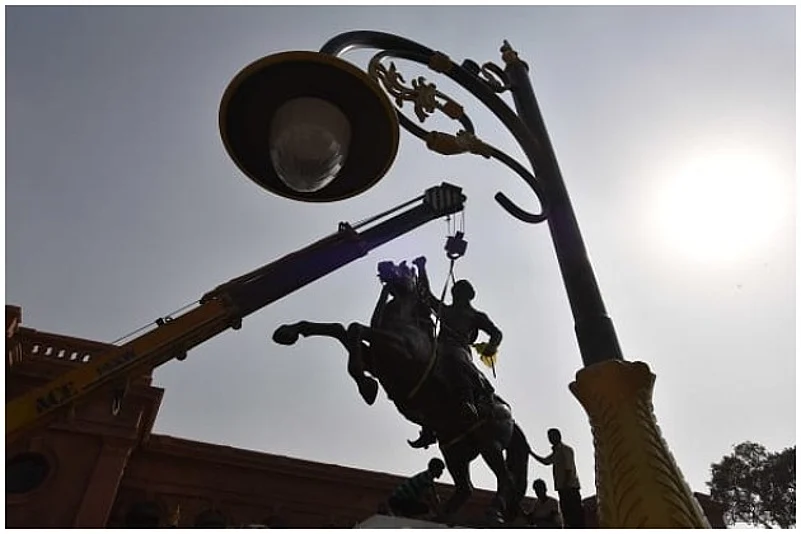
(Image Credit: Getty)
In 2018, the unveiling of Sardar Patel's Statue of Unity, India's first Home Minister at Kevadiya in Gujarat, had all the pomp and show befitting the stature of Vallabh Bhai Patel. However, the Statute of Unity, which cost the government a whopping Rs 2,989-crore, failed to 'unite'. There were tribals from Gujarat who opposed it and political leaders across Opposition parties who took a jibe at it. Congress accused BJP of appropriating their leaders. However, many political pundits viewed it as a move by BJP to counter Jawahar Lal Nehru's stature and replace it with Sardar Patel, as he was ideologically more on the right to the centre than Nehru, who was considered a Fabian socialist.
Congress President Rahul Gandhi had remarked that it was ironic that Patel's statue had been inaugurated, "but every institution he helped build is being smashed". "The systematic destruction of India's institutions is nothing short of treason," Gandhi added.
Rahul Gandhi's comment had come in the wake of an ongoing tussle between RBI and the government.
Meanwhile, Bahujan Samaj Party's supremo Mayawati Demanded an apology from the BJP for criticizing her for erecting statues of Dalit leaders during her tenure as chief minister of Uttar Pradesh.
"All those in the BJP, the RSS and company need to apologize, especially to the people of the Bahujan Samaj, for terming the statues installed by the then BSP government to honour icons like Baba Saheb Ambedkar and others as 'wasteful' expenditure," she had said in a statement.
Suravaram Sudhakar Reddy, the General Secretary of the Communist Party of India, sought to know why a larger statue of Mahatma Gandhi, born in Gujarat like Patel, had not been erected. "They [the BJP] don't like his [Gandhi's] secularism," Reddy told PTI, "which is why they haven't taken up [building his statue]." "Instead, they went after Patel, who held right-wing views."
The Statue of Unity is situated on the Sadhu Bet river island, 3.5 kilometres from the Narmada dam. The Narmada River, Satpuda, and Vindhyanchal Hills provide a picturesque backdrop. However, this didn't impress the tribals, who looked at it as the governments took their land away.
According to local tribal organizations, the statue had harmed 75,000 tribals. Dr Praful Vasava, a tribal leader, was reported by the media as saying that no food will be cooked in 72 villages affected by the project as they will be in "mourning". When a tribal village is mourning a deceased member, food is traditionally not cooked.
While unveiling the statue in 2018, the prime minister questioned those who opposed the government's decision to build the memorial, including opposition party leaders.
"I am amazed when some people of our own country dare to see this initiative from a political view and criticize us as if we have committed a huge crime. Is remembering the country's great personalities a crime?" he had asked.
"Had Sardar not unified India, we would need a visa to see lions, visit the holy shrine at Somnath, or view Charminar in Hyderabad. He has converted India's diversity into its biggest strength. The country, which is moving towards becoming the world's greatest economic and strategic power, is following the path shown by Sardar Patel," Modi had said then.
When Mayawati was the chief minister of Uttar Pradesh from 2007 and 2012, she constructed several Dalit memorials. It includes statues of BSP founder Kanshi Ram, herself and the party's election emblem, the 'elephant.' Over Rs, 2,600 crore were spent on memorials and statues in Lucknow, Noida, and other cities across the state.
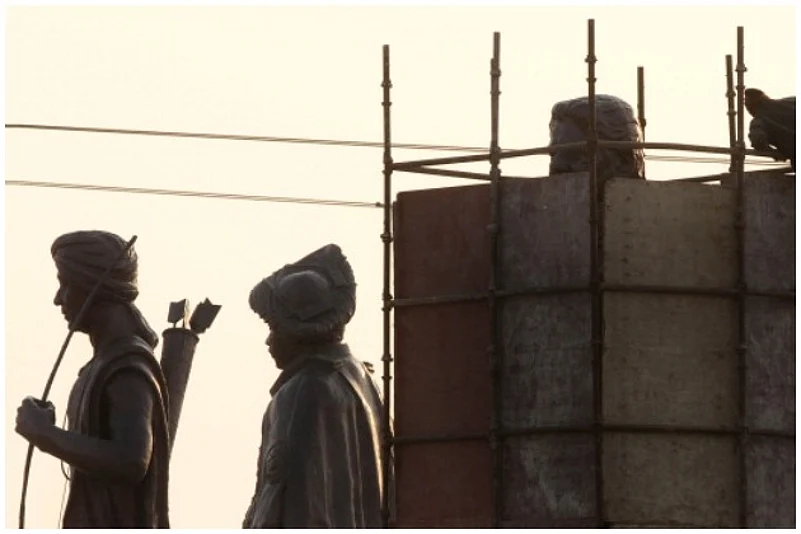
(Image credit: Getty)
This had brought Mayawati under sharp attack from the opposition. According to then BJP spokesman Hriday Narain Dixit, Mayawati's move raised a "constitutional question" about whether any political party in power may misuse government funds to build statues.
During his visits to the state, Congress general secretary Rahul Gandhi emphasized on federal money being "diverted and exploited" for party objectives.
However, Dalit intellectuals and leaders believe that 'savarna' conscience is hurt out of bounds when a Dalit leader asserts their identity and does things that they are 'morally prohibited' for them, like having a moustache, wearing expensive items or erecting statues of Dalit icons.
Rahul Sonpimple, a Dalit intellectual and leader, said, "Statues are part of the public sphere, and public sphere represents the culture and ideology of ruling caste - class. Having Gandhi, Nehru, Patel statue is normative. It goes with the dominant consciousness. However, the statue of leaders, icons or even religious deities of marginalized sections doesn't figure in popular culture. Dalits had struggled even to have the Ambedkar statue in parliament. In villages and even in cities, Dalits have faced and still face violent repercussions."
"Mayawati's act of erecting Dalit Bahujan statues and even her own statue goes against the so-called Brahmanical tradition. But, it's a part of remaking oppressed lost past and dignity," he added.
Former UP Chief Minister Mayawati in 2019, in an affidavit to the court, justified her decision of constructing statues, including hers. She told the Supreme Court that the life-size sculptures she erected in the state with public funds represent the "desire of the people".
Political analysts believe that people in power, propagate politics around statues to influence their voters' mindset and even indulge in financial corruption. Building statues involves huge sums of money there is usually very little accountability of how the funds are acquired or used.
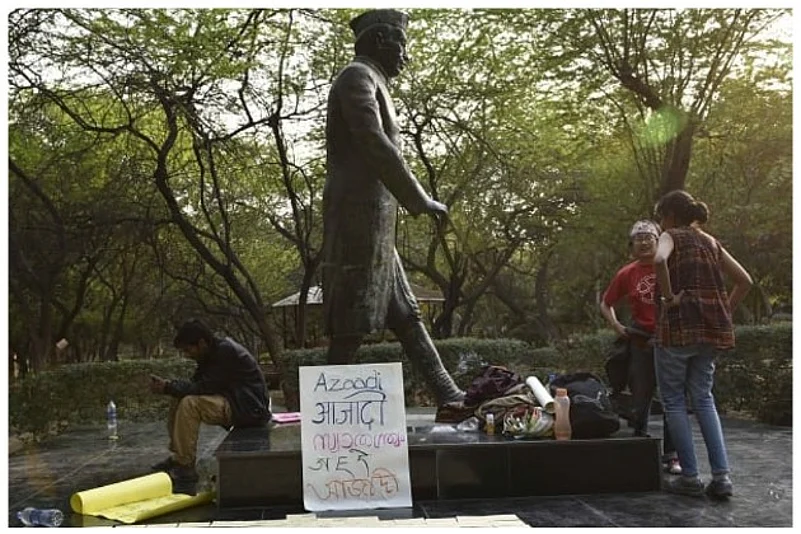
(Image credit: Getty)
Speaking to Outlook, Professor of Political Science at Maulana Azad National University, Hyderabad, Afroz Alam, said there are two dimensions to building statues: political and financial.
"People or parties in power erect statues of icons coming from a certain ideology to influence the mindset of voters. In some cases, it's also an exercise of assertion by certain groups. 'Symbols', both political and cultural, are invoked for this purpose." Afroz explains.
"It also has an economic dimension to it. Since thousands of crores of money is spent on these projects without much accountability, money is raised through donations without transparency, it also involves financial incentives for people involved in the project," he added.







